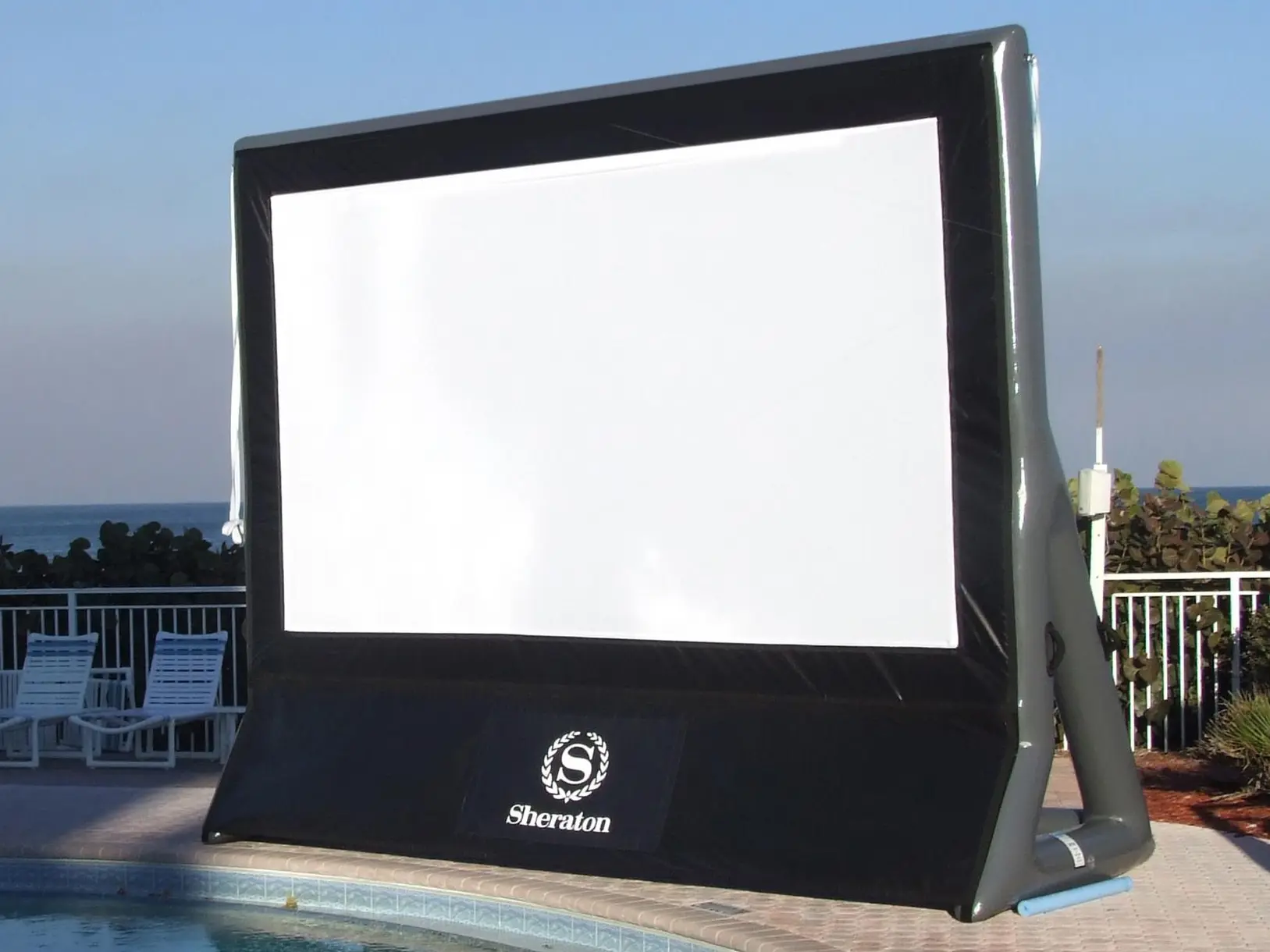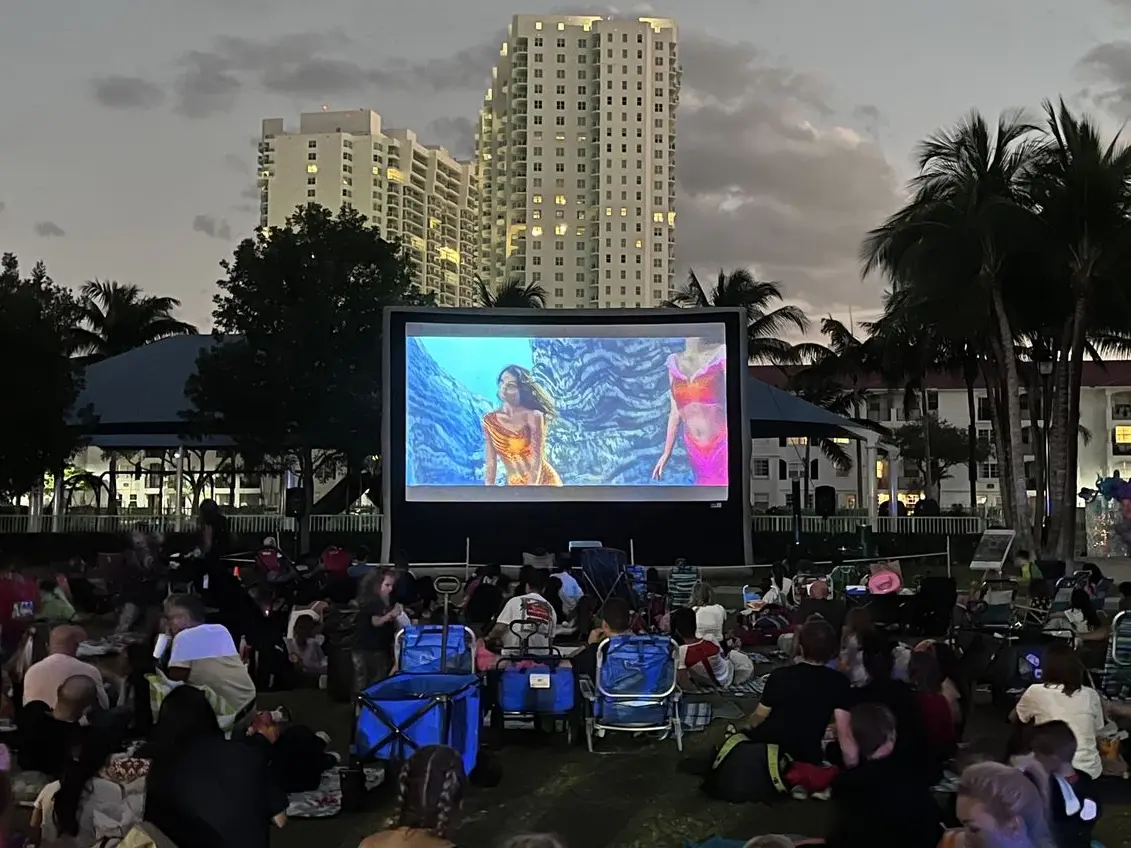Why Choose Epic?
When purchasing a large portable inflated screen, it is important to know how to evaluate feature qualities of projection screens from any manufacturer you consider.
Most inflatable screens are easily inflated and deflated, and they are ultra-portable, compared to aluminum framed screens. That is where the similarities end, however. Some of the obvious differences can be seen by looking at inflated screens. However, here are some very important things you can’t see, or may not be thinking of:
Fabrication method and materials. An inflatable screen frame is either sewn or welded.
Sewn frames are usually made of 8 – 12 oz vinyl fabric. The sewing process results in thousands of tiny needle punctures on all of the seams. Since quite a bit of air leaks through these puncture points, as well as through the thin fabric, a constant air blower must be used to keep the frame standing up. These noisy blowers detract from the experience. “Sound dampening” devices sold to mask the noise are expensive, heavy, and not very efficient.
Welded frames are either hot air welded or HF (high frequency) welded. HF welded frames are typically made of 18 oz vinyl, which will leak some air through the porous material, and therefore a constant air blower must be used
Hot-air welded frames are typically made of 22 – 28 oz vinyl. No constant air blower is required with frames welded from 22 oz. or thicker vinyl, since there are no microscopic pores that leak air in this material, and all seams are overlapped, with no punctures. Therefore, the welded frames are airtight – the same construction as a heavy-duty inflated boat dinghy.
The welded construction of both HF and hot air welded materials is very dependable, with overlapped, reinforced seams and attachment points. Frames for commercial use should be made of heavy-duty material capable of withstanding the abuse associated with frequent use, possibly rugged terrain, or abrasive surfaces. Compare thickness of the material and tear strength (denier) of the polyester reinforcement layer inside the vinyl. Look for minimum 700 denier specifications, with 1000 denier the strongest for this type of vinyl.
- Bottom surfaces. When the frame is inflated, it is imperative that there be extra reinforcement, such as grooved rubber anti-abrasion overlays along the bottom of the frame, to protect against damage from rough surfaces, or sharp objects on the ground.
- Positioning after inflation. Most frames have no handles to facilitate lifting and placing in proper position, so they must be dragged into place. Look for a frame with handles that will facilitate easy lifting for positioning, once inflated.
- Strength and firmness. An inflated frame should be very taut for maximum strength. Although welded frames have smaller diameter tubes, the frames are stronger and much tighter than sewn frames. Strength is important, so that the projection screen surface does not droop at the center of the frame.
- Footprint. If space is limited, be aware of the overall dimensions of the frame, including height, width, and depth of the legs. Typically, tube diameter of welded frames will be approximately half the size of a sewn frame. Also, with airtight frames, you can move the frame away from electrical outlets, for more flexibility with use.
- Mold and mildew. If kept clean and dry, all types of inflatables will resist mold or mildew. But if a sewn frame gets wet and is not dried out thoroughly, it could be susceptible to mold or mildew inside the frame, due to water seepage through the needle holes at the seams. Once inside, there is no way to remove the water completely before mold forms. Choose a frame that is welded airtight, with overlapped seams.
- Safety. Is the frame safe for use on wet surfaces, such as a pool deck? Choose a frame that does not require constant electrical power. Wet surfaces could be dangerous to your audience if the constant air blower were not adequately grounded. Also, if a sudden wind were to blow the frame into a pool, the attached blower could be a safety issue. It is very important to securely anchor all sizes of inflatable frames. Be sure the frame has sufficient tethers and the means to secure the tethers to stakes or other tie down ballasts.
Now that you are a little more aware of what’s important to look for, here are some details that will help you determine what’s best for you. Consult the Comparison Chart to easily compare products.
Choose a sealed hot-air welded frame that is airtight. You will not need the constant air blower, so your screen can be used anywhere…inside or outside…even floating on the pool! If your screen depends on a constant air blower, and the blower malfunctions, the screen will deflate in seconds and ruin your event!
Request an Epic Quote
Tell us your vision — What kind of Epic Experience can we help you create?

